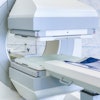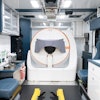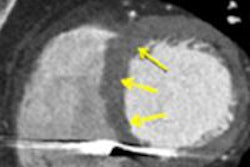
NEW YORK (Reuters Health) - In the short term, cryoablation and radiofrequency (RF) ablation were equally effective for atrioventricular nodal reentrant tachycardia (AVNRT) in a German study -- but six months later, recurrence was higher with cryoablation.
A major complication of RF catheter ablation of the slow AV nodal pathway is permanent AV block, due to inadvertent damage to the fast pathway. The researchers had expected that cryoablation might be safer, because it affords greater control of tissue destruction.
After comparing the two approaches, however, they found the disadvantages of cryoablation outweighed any advantage.
"In future, we will use cryoenergy for AVNRT only in anatomically difficult cases and in small children, because in these cases, the potential safety advantage of cryoablation seems important," Dr. Isabel Deisenhofer told Reuters Health in an e-mail.
In the multicenter CYRANO trial, reported online November 30 in Circulation, Dr. Deisenhofer with Deutsches Herzzentrum Munchen and her colleagues randomly assigned 509 patients with AVNRT to slow pathway cryoablation or radiofrequency catheter ablation (RFCA).
Cryoablation and RFCA had almost identical rates of immediate ablation success (96.8% vs 98.4%) and permanent AV block (0% vs 0.4%).
But as Dr. Deisenhofer pointed out in her e-mail, "Significantly more patients in the cryoablation than in the RFCA group experienced AVNRT recurrence (9.4% vs 4.4%; p = 0.029), leading to a significant difference of the combined primary end point of ablation success, AV-block and AVNRT recurrence."
Cryoablation was associated with lower pain, but pain scores were relatively low in both groups -- 20.3 in the RFCA group versus 7.3 in the cryoablation group, on a pain perception scale of 0 (no pain) to 100 (maximum pain).
While less pain perception with cryoablation is an advantage, it's "counterbalanced by longer procedure times and frequent device functionality failure," Dr. Deisenhofer said.
Summing up, she concluded: "Cryoablation in patients with AVNRT is associated with a comparably high acute success rate as RF. However, the significantly higher recurrence rate after cryoablation is probably the main limitation of using this energy form for AVNRT ablation, especially as the potential safety benefit of cryoenergy seems negligible."
By Robert Saunders
Source: http://link.reuters.com/hyv48q
Circulation2010;122:2239-2245.
Last Updated: 2010-12-03 13:01:05 -0400 (Reuters Health)
Related Reading
Catheter ablation for AF improves outcomes in heart failure, December 2, 2004
Copyright © 2010 Reuters Limited. All rights reserved. Republication or redistribution of Reuters content, including by framing or similar means, is expressly prohibited without the prior written consent of Reuters. Reuters shall not be liable for any errors or delays in the content, or for any actions taken in reliance thereon. Reuters and the Reuters sphere logo are registered trademarks and trademarks of the Reuters group of companies around the world.


















